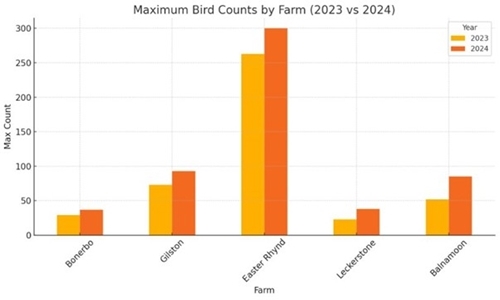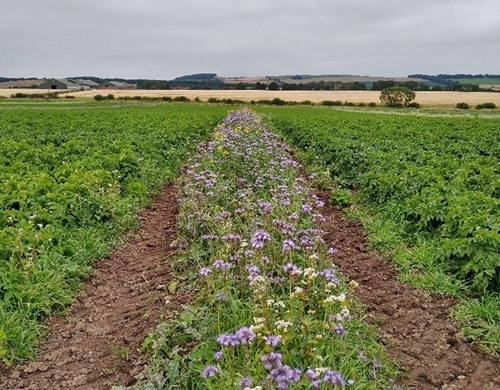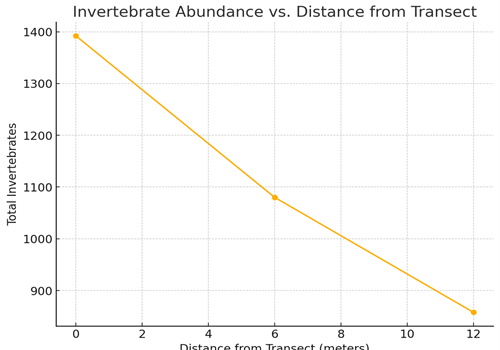Written by Fiona Torrance, Farmland Biodiversity Advisor and PepsiCo FAB project manager. Thanks to Alistair Green for processing the data.
The PepsiCo FAB (Farming Arable Biodiversity) project launched with ambitious goals. Building on the success of the Interreg PARTRIDGE project, we set out to show that the same principles could be applied more broadly at other farms across Fife and Angus.
Central to the project is the belief that productive farming and strong environmental stewardship can work together. To demonstrate this, we have been monitoring key species at our demonstration farm and five pilot farms following the sowing of wild bird seed mixes at each site.
Although breeding bird populations have been monitored for several years at Balgonie, the five pilot farms that are part of the project had not undertaken any monitoring to date. Carrying out baseline surveys (that is, recording what is present on site before you make habitat changes) is crucial if we are to measure the success of the habitats provided. As fieldwork for the project only started in 2023, it is too early to draw conclusions. However, with high-quality habitats being introduced in 2024, these early years of data collection are vital to determine how local species respond. In terms of observations, we found a small increase between 2023 and 2024 at the pilot farms (see figure 1) which is encouraging. Song birds can take a few years to respond to habitat improvements and so we look forward to finding out how they respond in the future.

Figure 1: Maximum bird counts found at each pilot farm during 2023 and 2024.
In addition to our bird monitoring, we have also been investigating invertebrate populations with a particular focus on Integrated Pest Management (IPM) at Balgonie.
As aphids contribute to the spread of viruses that affect potato crops, and with chemical controls being gradually withdrawn, we aim to support natural pest control by creating habitats for predatory insects such as lacewings, ladybirds, and spiders.
At Balgonie, this is achieved by sowing pollinator mixes within the tramlines themselves (see figure 2). These strips not only provide habitat for predatory insects but also for farmland birds, as well as providing additional landscape connectivity to allow wildlife to move from one side of a field to the other.

Figure 2: A tramline sown with an enhanced mix to encourage predatory insects. Credit: Fiona Torrance
Again, results are still at an early stage, but are encouraging. We found there were more insects within the tramline, which then decrease as you move out into the potatoes themselves (see figure 3).

Figure 3: Graph showing the distribution of insects as the distance from the potato tramline increases.
This has many implications for farming, with a reduction in the amount of pesticides used beneficial for biodiversity as well as the farmer’s wallet.
With funding secured for another year for PepsiCo FAB, the team are excited to see how biodiversity responds to the habitats we have provided, as well as working with the farmers themselves to continue to develop agricultural tools for the future.